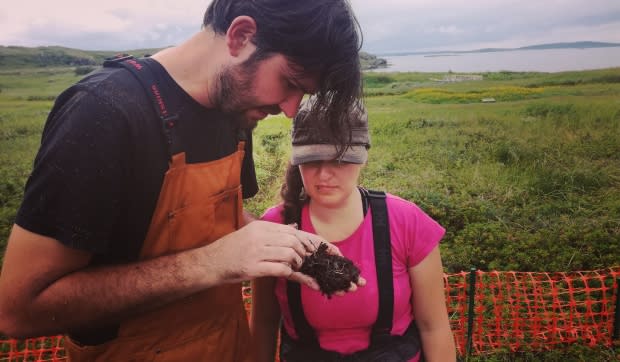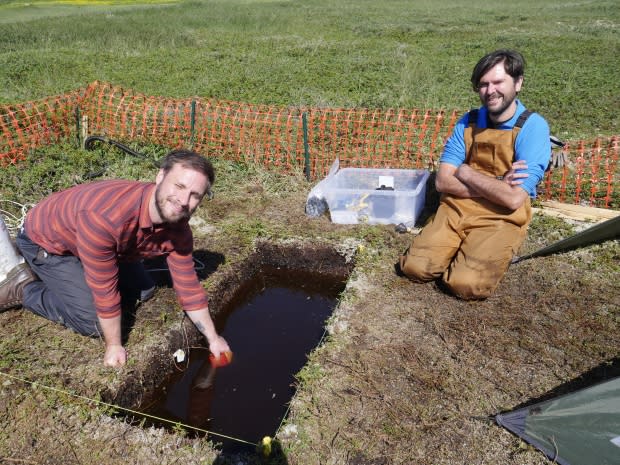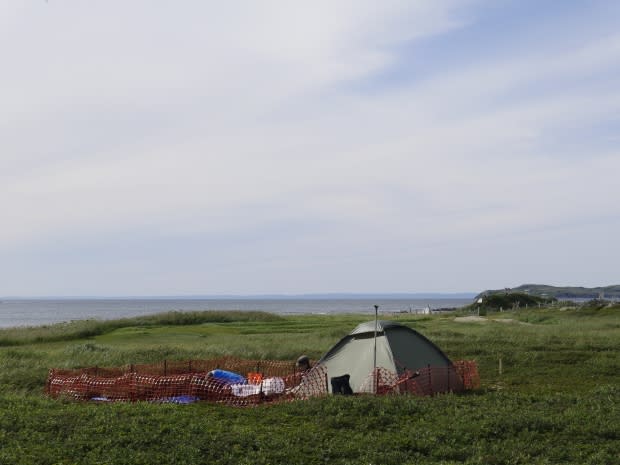Archeologists discover new evidence of human activity at L'Anse aux Meadows

L'Anse aux Meadows, the site of a Norse colony founded a millennium ago and where Indigenous tribes once hunted and gathered, is already famous as an archeologist's dream — and the area is not yet done revealing history's secrets.
A team of archeologists from Memorial University, led by Paul Ledger, has discovered a new layer of evidence of human occupancy while they were searching for something else.
"We were there to do a study of the environmental change of the site in relation to the human occupation of the site. Primarily we were interested in how the environment had changed around the Norse colonization of L'Anse aux Meadows," Ledger told CBC Newfoundland Morning.
The key to finding that information? Digging through peat.

"Peat accumulates at a rate of a millimetre a year, effectively. And as it's doing that it records micro-fossils and things from the environment — things like pollen or charcoal that's in the air, or other living matter. And it incorporates that into the peat so as you go down through the peat, you go back in time."
Ledger's original aim was to collect the samples and then analyze them in the lab to see the environmental history.
Instead, his team found much more. They were about 35 to 40 centimetres deep, about 30 metres from the Norse ruins, when they found what appeared to be cultural material that carbon dating identifies as coming from the late 12th to mid-13th century,
We don't know what culture produced these things. - Paul Ledger
"It had some charcoal in it, some wood chips. They looked like woodworking debitage [debris], basically, so they were sort of unusual angles and they look like they've been cut," said Ledger. "Some of it looks like it's been split with an axe or maybe a stone tool.
"We don't know what culture produced these things. They just look like they've been worked."
There were also insect remains found in the peat, which could help them better understand the history of the site.
'Almost certainly probably' not European
Véronique Forbes, an archeological professor who was a member of the dig team, found insects that were believed not to have appeared in Canada until much later.

"Some of the insects that she found, two species, are suspected to be introduced into Canada. So the assumption there is that these things … came after the 16th century, so sort of post-John Cabot," he said. "So it's interesting that they're there in the 12th century."
Ledger isn't confident in declaring exactly what it all means; the material appears similar to other Norse deposits in the North Atlantic, but dates to a time after the Norse settlement, suggesting it could be from Indigenous people in the area.
"We're not 100 per cent sure what it is. It's cultural. We don't know who laid it down or what exactly it is."
For those looking to discover a deeper Norse connection in Newfoundland, Ledger says not to get your hopes up.
"This is almost certainly probably not associated with Europeans, this deposit we found," he said. "But it's where people have been after the Europeans have been — and it's interesting to see what sort of things have maybe ended up in this environment where Europeans were in the 11th century."
More research to be done
Even if they haven't found all of the answers, It's still a huge deal to Ledger and his peers.
"It's exciting because it's very well preserved in a peat bog and there's lots and lots of good preservation and organic remains."
Read more from CBC Newfoundland and Labrador
More from Newfoundland Morning
Sign up for delivery of on-demand highlights from CBC Radio's Newfoundland Morning, which covers issues in rural Newfoundland. Click on the buttons below to subscribe for podcast delivery on iOS or Android devices.


